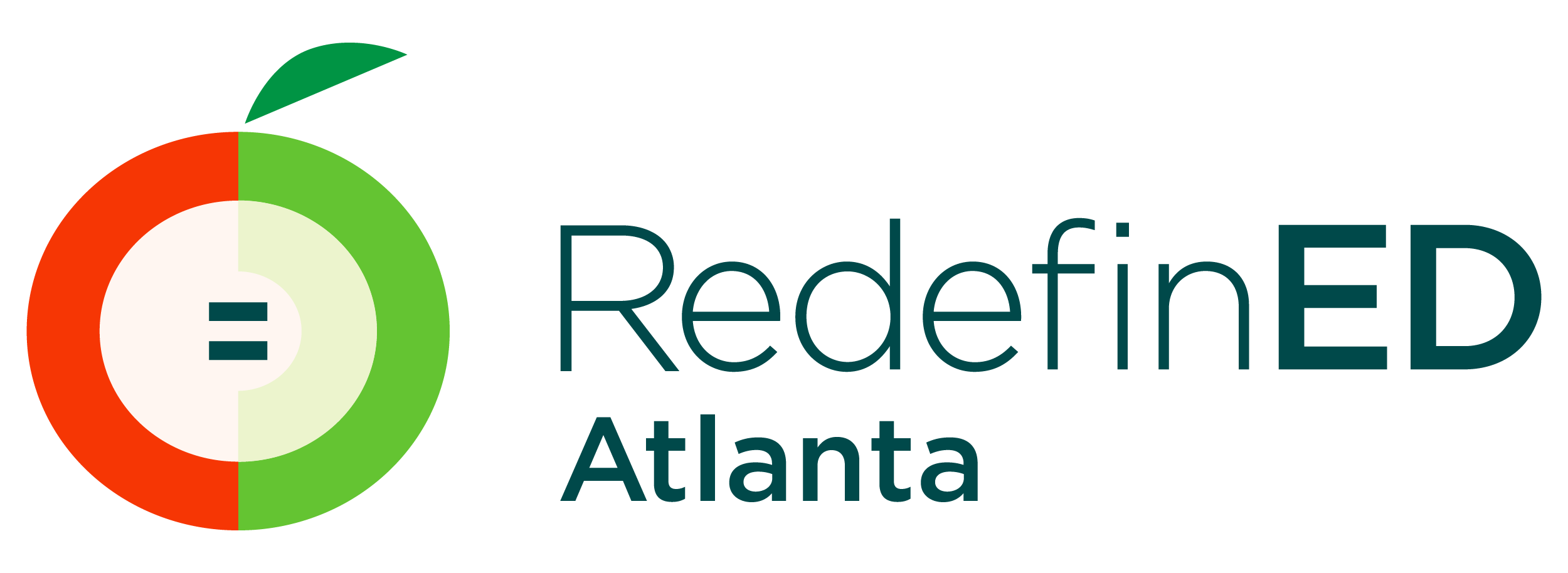Methodology
Home » Atlanta Schools Data Project » Methodology
Achievement is the percentage of students who scored proficient or above on the Georgia Milestones exam.
For EOG exams, the percentage proficient and above is first calculated by subject. The subject proficiency rates are weighted by number of students when averaging across grades. Then proficiency rates are averaged across subjects, weighted by the number of tested grades.
For EOC exams, the 4 exams are averaged equally across subjects.
Student Growth is a measure of how much growth students are demonstrating relative to academically‐similar students. This measure uses results from GADOE’s student growth model. The rating represents the percentage of students that GADOE describes as having typical or high growth. This level is defined as at least the 35th percentile of student growth.
To produce a single score for each school, we use a weighted average by student to produce ELA and math growth scores. We then use an unweighted average to combine ELA and math.
Climate uses indicators from GADOE Climate Stars. A principal components model is used to weight the climate indicators so that better measures have more weight. The resulting score is then converted to a state percentile rank relative to other schools in the same grade band.
Unlike the state’s rating system, ours does not assign additional points for implementing PBIS, nor subtract points for USCO incidents.
GADOE climate indicators are not broken out by grade bands. To rank climate data for schools with non-traditional grade configurations, we create a synthetic distribution by calculating the state mean and standard deviation for each grade band, and then combining these, weighted by number of grades in the school with a non-traditional grade configuration.
Similar Schools Comparison compares the achievement scores of schools that are similar along several dimensions- poverty, mobility (students changing schools), race/ethnicity, and students with disabilities. Poverty and mobility play the largest role in the similar schools score because they are most strongly correlated with achievement scores.
More specifically, the similar schools rating is created with a beta regression of school achievement score on direct certification percentage (poverty), GOSA’s churn rate (mobility), race/ethnicity percentages, and students with disabilities. Each school’s residual in this regression is their similar schools rating. The model is estimated separately for elementary, middle, and high schools.
The equity details page shows three different measures of equity: achievement, growth and gaps. The achievement and growth measures are used to create the overall equity score.
Achievement
Achievement uses the percentage of students who are proficient and above for five different subgroups: Black, Hispanic, English learners, Students with Disability, and low-income. Results with at least ten tested students are included. The subgroup achievement data used for this metric is from GOSA.
Growth
Growth is a measure of how much growth students are demonstrating relative to academically similar students. This measure uses a weighted summary of subgroup growth scores, released in CCRPI data files. The growth scores come from GADOE’s Student Growth Model. SGPs of 1‐29 earn 0 points, 30-40 earn 0.5 points, 41-65 earn 1 point, and 66-99 earn 1.5 points. Growth data is reported if at least 15 students in a subgroup have growth scores.
The weighting of the equity growth scores differs from the simpler summary used in our overall growth ratings. This is because GADOE does not release subgroup growth using the simpler formula.
Gaps
Gaps use the difference in the percentage of students who are proficient and above for five different types of gaps: Black-White, Hispanic-White, English Learner-non-English Learners, Students with Disabilities-students without disabilities, and low-income students- non-low-income students. A gap category is included if there are at least ten tested students in both groups. The subgroup achievement data used for this metric is from GOSA.
Overall Equity
To calculate the overall equity score, the five subgroup scores are combined using a weighted average by the number of students to create scores for achievement and growth. Then, the score for both gap types is converted to a state percentile rank and the lowest of the two percentile ranks is selected. The resulting rank is a school’s equity score.
The gaps measure is not used for the overall equity score because this can penalize schools for having subgroups of high-performing students. Instead, the equity score is based on the performance of different groups within a school relative to the entire state.
Graduation rate is the four-year cohort adjusted graduation rate, as calculated by GADOE. This rate is the number of students who graduated in four years, divided by the total number of students in the cohort. In other words, students who drop out at any time during their four years in high school count against the graduation rate. Students who transfer to a different school are not included in their first school’s calculation, but they are included in their new school’s calculation.
